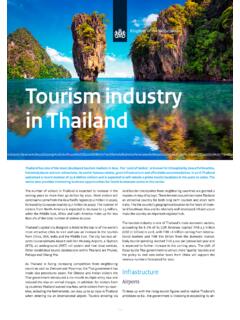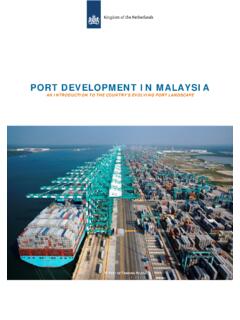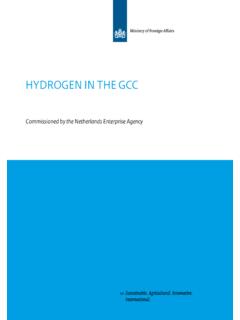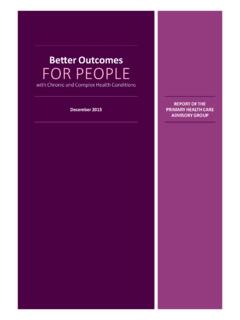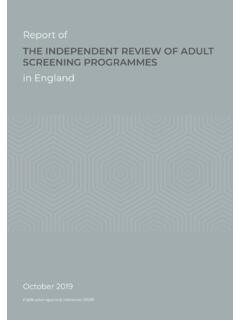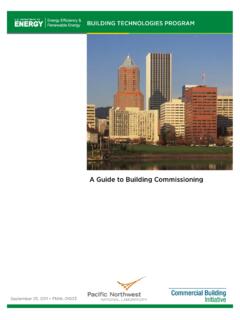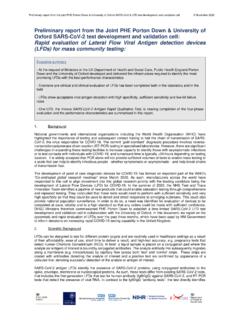Transcription of Final Energy Report Uganda - RVO
1 Final Energy Report Uganda Commissioned by the Netherlands Enterprise Agency Report Uganda Author: Kees Mokveld & Steven von Eije ( ) Date: 30-7-2018 Version:6 ( Final ) RVO 1. Uganda General 2 2. Energy 3 3. Renewable Energy .. 7 4. Energy 10 5. Governmental framework .. 11 6. Regulatory framework .. 15 7. Access to 18 8. Opportunities and barriers for Dutch 19 9. Dutch companies active in 21 10. Relevant Dutch support schemes .. 22 11. Relevant international donors .. 26 Annex 1 References: .. 29 Annex 2 Legislation .. 30 Disclaimer This document is based on information which is publicly available on the internet. The used publications and websites are mentioned in the Annex 1 of this document. The information is checked with other sources.
2 The information in Chapter 7 is based on interviews with several experts. No rights can be derived from the information provided in this Report and the statements in the Report remain the responsibility of the authors and do not necessarily reflect the position of the Dutch Government. While the Netherlands Enterprise Agency has exercised the utmost care in the editing and redaction of this Report , it must disclaim all responsibility and liability for any and all possible oversights with regard to content completeness. 1 1. Uganda General overview Official name Republic of Uganda Area (km2) (6x Nederland) Land Area (km2) (6x Nederland) Population (2x Nederland) GDP per capita (2016 est) (WB) $ 580 Agriculture coffee, tea, cotton, tobacco, cassava (manioc, tapioca), potatoes, corn, millet, pulses, cut flowers; beef, goat meat, milk, poultry, and fish Industry sugar processing, brewing, tobacco, cotton textiles; cement, steel production CO2 emissions (tCO2/capita) Price of electricity (US cents/kWh) Source: CIA Factbook, World Bank and 2 2.
3 Energy overview Overview of the Energy sector/General description Uganda has one of the lowest per capita electricity consumption rates in the world. Generation capacity is dominated by hydropower, supported by heavy fuel oil and biomass cogeneration power plants. As in other Sub-Saharan African countries that predominantly rely on hydropower, erratic rainfall and droughts have affected electricity supply in recent years and led to frequent load shedding. Currently, thanks to increased capacity and 50 MW of capacity from heavy fuel oil plants, incidence of load shedding has declined to almost zero. Uganda s largest hydroelectric power plant is the 250 MW Bujagali plant, which was commissioned in 2012 and almost doubled Uganda s installed capacity at the time. It is operated by a public-private partnership between the Government of Uganda , investment firm Blackstone, Sithe Global Power and the Aga Khan Fund for Economic Development.
4 The country is under pressure to find additional Energy sources, as electricity demand is growing at an annual rate of 10-12%. It also intends to achieve a rural electrification rate of 22% by 2022. [1] Low-grade forms of Energy , especially traditional biomass fuels, account for more than 90% of total Energy consumption. Two bagasse plants have opened at sugar production facilities, at Kakira and Kinyara. [2] Primary Energy use/ Energy supply Total Primary Energy Supply ktoe Coal Crude Oil Oil products 1550 Natural gas 7 Nuclear Hydro 266 Geothermal, solar, wind, etc. 1 Biofuels and waste 16624 Electricity -6 Heat Total 18443 Source CIA Factbook 2015 (EST) No IEA Statistics available 3 Energy consumption Total Final consumption ktoe Coal Crude Oil Oil products 1531 Natural gas 7 Nuclear 0 Hydro Geothermal, solar, wind, etc.
5 Biofuels and waste 12877 Electricity 216 Heat Total 14631 Source CIA Factbook 2015 (EST) No IEA Statistics available Electricity production Electricity production GWh Large Hydro 2771 Small Hyrdro 311 Co-generation (mainly bagasse) 353 Thermal Heavy Fuel Oil) 78 Hybrid (Solar/Diesel) 0,311 Electricity production 3513,311 Source CIA Factbook 2015 (EST) No IEA Statistics available Transmission and distribution The Ugandan power transmission network consists primarily of 132 kV lines to the various load centres, where power is distributed to the 11 kV and 33 kV distribution network. The transmission backbone runs from Jinja, where the Nalubaale, Kiira and Bujagali hydropower plants are situated, to Kampala. Future plans call for a regional 220 kV network around Lake Victoria. Lines at the Bujagali power station already run at 220kV. The 132 kV network extends to Bukoba in neighbouring Tanzania and to Kenya, via Tororo.
6 There are lower capacity transmission lines (33 kV) to Rwanda and the Democratic Republic of Congo. Since the establishment of the UETCL, 150 km of 220 kV and 1,441 km of 132 kV transmission lines have been added to the national grid. UETCL maintains and operates 16 substations, ranging from 66 kV to 220 kV. A number of old 132 kV lines are being reconnected to improve the reliability and quality of supply in some areas of the country. Uganda plans to increase the length of the transmission network to 3,400 km as it seeks to boost electricity production and reduce transmission losses. [1] 4 Strengthening the inter-connection of the Kenyan and Ugandan power grids, as well as establishing new grid connections with Rwanda, has been planned in the past.
7 Substantial allocations have been made in the 2010/2011 budget for improvements to the Energy infrastructure. Excessive water release into Lake Victoria due to the operation of the Owen Falls hydroelectric facilities has led to a need to reduce flow through the facilities, to preserve the water levels in the lake. This will translate to a loss of roughly 40 MW of capacity from the facilities. To counteract this, a number of developments are being made, including the early commissioning of 100 MW of the Bujagali hydroelectric dam, and the construction of the $ billion Karuma hydropower dam on River Nile in northern Uganda , one of the east African region's biggest power projects, is expected to commence early next year. The government has said it intends to develop the 700 MW project as a public-private partnership venture, and allocated 828 billion shillings for it in 2011/2012 budget.
8 [2] Uganda is one of the few sub-Saharan countries to have liberalized its Energy market; generation, transmission and supply were unbundled in 2001. Distribution is dominated by Umeme, which in 2015 supplied 98% of Uganda s electricity consumption. The near-monopoly is a publicly traded company with a 20-year concession for distribution and retail in Kampala and several other territories. Uganda Electricity Transmission Company (UETCL) and UEGCL are both state owned and have a mandate to support government policy objectives. IPPs account for 60% of generation capacity, a share which is set to grow in the near term as a number of smaller renewables projects are developed. However, UEGCL expects to almost triple its capacity with 783MW due to come online in 2018 between the Karuma and Isimba hydropower projects. Another 1,2GW of new capacity in large hydro plants is currently planned for 2023.
9 [5] Access to electricity (2015) % of the population Electrification total % 27 % Electrification urban areas % 58 % Electrification rural area % 18 % Access to clean cooking 1 % Source TRACKING SDG7: THE Energy PROGRESS Report 2018 Off-Grid Electrification Uganda has one of the lowest electrification rates in Africa, remaining at in 2016. Under the Strategy and Plan covering 2013-22, the Rural Electrification Agency aims to connect over customers to the main grid. The Agency plans to increase today s 7% rural electrification rate to 26% by 2022, with the ultimate goal of universal access by 2035. It is also in the process of building micro-grids to connect an additional 144,000 off-grid customers via solar PV, micro-hydro and biomass generation financed by private developers or local communities. [5] The solar PV market in Uganda has steadily grown over the last 15 years with new players, including foreign investors, entering the market.
10 The lack of grid access in rural areas and the growth of telecoms, which facilitates mobile payment and monitoring systems, are structural factor that have benefited off-grid solar development. Policy measures such as tax exemptions1 for equipment for solar and wind generation and subsidies for end-users have also supported expansion of the sector. However, many players complain that these mechanisms are poorly implemented, often creating additional challenges. Biofuels production has been lacklustre to date. However a biofuels blending 1 recently VAT exemption for renewable Energy products until in Uganda was stopped. 5 bill has been introduced by the government and is expected to pass into law in 2017. This should support development of production capacity on top of an 18mLpa bioethanol plant that was commissioned in September 2016. [5] 6 3.



